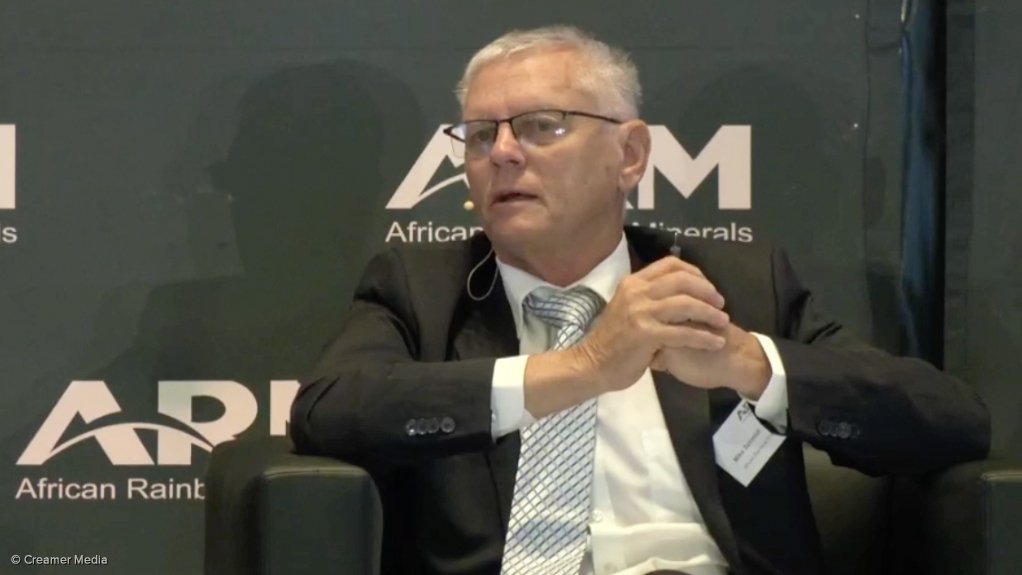JOHANNESBURG (miningweekly.com) – In the 12 months to June 30, diversified mining company African Rainbow Minerals (ARM) achieved the 4% carbon reduction target that executive chairperson Dr Patrice Motsepe set for the Johannesburg Stock Exchange-listed company.
“But that’s just the tip of the iceberg,” said former ARM CEO Mike Schmidt, in his new green role as executive of growth and strategic development in the executive chairperson’s office.
While ARM has set targets to achieve net-zero scope 1 and 2 greenhouse gas emissions from mining by 2050, Schmidt highlighted in response to Mining Weekly questions about the company’s decarbonisation progress that “we review those targets every single year”.
In developing decarbonisation pathways that detail the short- and medium-term steps needed to achieve the long-term target, ARM is focusing on ways to implement these through the allocation of capital to renewable energy and other measures, developing executive incentives to drive operational action, and introducing data systems that improve the quality and efficiency of its reporting.
Having just come off intense operational and training involvement, Schmidt added: “We’re getting an understanding of what we can do.”
While ARM expressed happiness about the R1.5-billion worth of headline earnings brought in by coal in the 12 months to June 30 – which was a 65% improvement on the headline earnings that the combustible black rock generated in the 2022 financial year – Motsepe simultaneously expressed deep commitment to working together to deal with the challenge of climate change, along with equal support for the success of South Africa’s just energy transition.
Through its membership of the International Council on Mining and Metals, ARM went public as early as 2017 on management incentivisation to meet the net-zero imperative, while obviously doing all the right things from energy efficiency and responsible citizenship points of view.
“You would have seen that in the last six months, we announced the 100 MW intervention on solar power, which will go a long way to help the platinum operations, not only by reducing their electricity consumption, but also the power disruption that has hit them very hard over the last couple of months,” said Schmidt.
In April, a 20-year power purchase agreement was concluded with SOLA Group and financial close was reached for wheeling 100 MW of solar photovoltaic (PV) power to ARM Platinum's mining operations. This agreement is expected to generate 4 900 000 MWh of renewable electricity and eliminate 4 800 000 t of carbon dioxide emission over 20 years.
Construction of the solar PV facility began in July and electrical energy from it is expected to begin supplying ARM Platinum's mining operations in 2026.
Eskom is currently building a new 132 kV transmission line to meet increased electricity requirements associated with the Two Rivers Merensky Project.
Construction completion and commissioning are planned for financial year 2024 in time for the new Merensky concentrator plant's power requirements. This investment in network infrastructure will further contribute to the potential for wheeling renewable power to the mine.
At ARM Ferrous mining operations, a feasibility study commissioned in 2021 experienced performance challenges and the contract has been terminated. The Northern Cape mines are now progressing with a prefeasibility study to explore the correct energy mix for the mines that will cater to the baseload demand.
The study will also explore the best option between outright ownership versus sourcing power from independent power producers.
“We know that diesel costs, excluding the capital component, run at eight times the cost of electricity, which is itself quite prohibitive,” said Schmidt, who is intent on not only making a big dent in the company’s carbon emissions but also driving it down the cost curve.
“All the mines have got a commitment to move from current underground diesel and surface diesel into more energy efficient battery electric mode.
“The Northern Cape is quite advanced in this, particularly the underground Black Rock mine. These pathways have and are being identified. Management at operations is incentivised to meet and beat those targets, but it has to make, and does make, good financial and operating sense.
“We have definite pathways in place. When the new report is published, you will see quite aggressive enhancements to further reducing greenhouse gas on our road to net zero,” Schmidt revealed.
Steps are being taken to ensure that every ARM operation ultimately becomes more efficient, greener, less dependent on Eskom per se, or fossil fuels.
Engineers and production staff are incentivised on energy efficiency per tonne of ore milled, time of energy use and use of alternative energy sources. Remuneration and incentive packages of production teams and other appropriate positions at the smelters include key performance indicators linked to emission-reduction initiatives.
EMAIL THIS ARTICLE SAVE THIS ARTICLE ARTICLE ENQUIRY
To subscribe email subscriptions@creamermedia.co.za or click here
To advertise email advertising@creamermedia.co.za or click here











